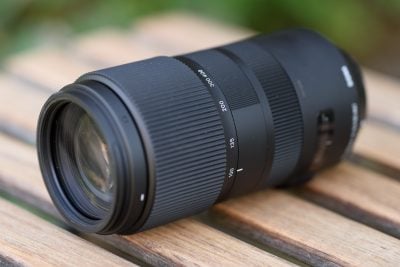Sigma 100-400mm f5-6.3 OS review
-
-
Written by Thomas
In depth
The Sigma 100-400mm f5-6.3 OS is a long telephoto zoom available in mounts for Canon, Nikon and Sigma DSLRs with full-frame sensors and can also be used with Sony E-Mount bodies using Sigma’s MC-11 mount converter.
Announced in February 2017 it might be considered the successor to Sigma’s 120-400mm f4.5-5.6 OS that has been no longer available for some time now. But it is much lighter and also smaller than the old zoom. And as you would expect from any new Sigma lens it is compatible with their USB-dock to fine tune various characteristics of AF and image stabilization, plus if you change bodies, you can pay to have the mount swapped for your new system. And this all comes at a low price: 800 USD / 900 EUR is one of the most affordable of any modern zoom reaching 400mm focal length.
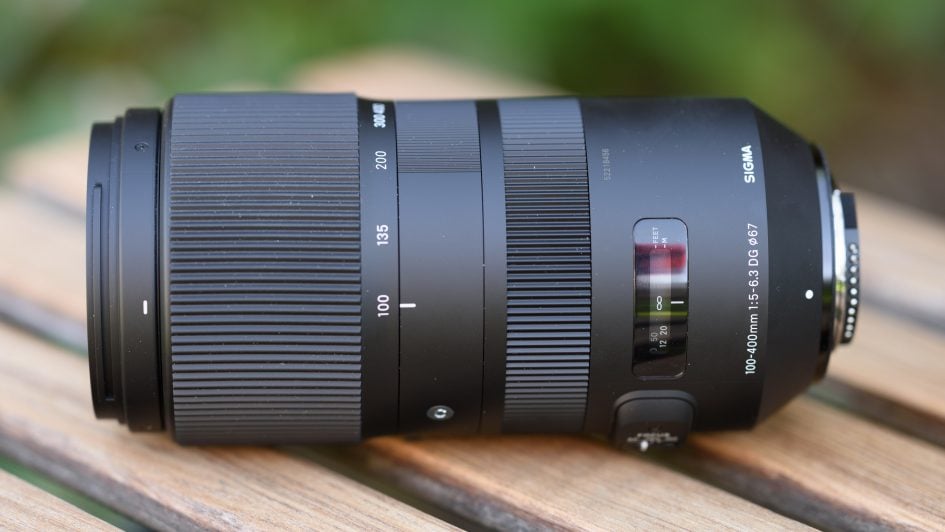
Facts from the catalog
As usual I’ll have a look at the technical data of the Sigma first. I’ve rated the features with a [+] (or [++]), when it’s better than average or even state of the art, a [0] if it’s standard or just average, and [-] if there’s a disadvantage. For comparison I use the Nikon 80-400mm f4.5-5.6G VR (“Nikon” for short) and the Canon EF 100-400mm f4.5-5.6 L IS II (“Canon”). Keep in mind that both the Canon and Nikon lenses are a third of a stop faster than the new Sigma. That may not seem much in light gathering power but it certainly is one of the major reasons for differences in price and weight.
Size (diameter x length): 86 x 182 mm (3.4 x 7.2 in.), the lens hood adds 60 mm (with a diameter of 97 mm) . Zooming out adds another 60 mm which gives a total maximum length of 302 mm. The zoom can be locked at 100 mm. The Nikon is 96 x 204 mm with the lens hood and zoom adding another 86+56 mm to a total maximal length of 346 mm. The Canon is 94 mm in diameter and 193 mm long (w/o lens hood and at 100mm focal length). [+]
Weight: 1147 g (40 oz.) plus 66 g for the plastic lens hood. The Nikon is 1471 g (w/o tripod collar of 93 g) the lens hood adding another 95 g. The Canon is around 1570 g (incl. tripod collar). So the new Sigma is by far the lightest zoom reaching 400mm although it gives up a third of a stop in focal ratio to achieve this. [+]
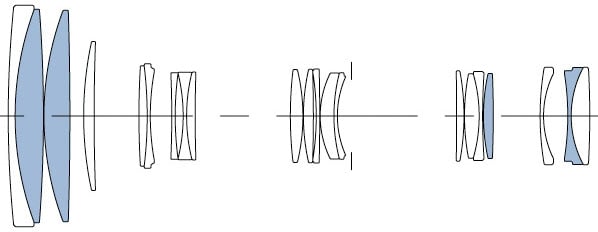
Optics: 21 elements (including 4 special dispersion elements) in 15 groups vs. 20 elements in 12 groups for the Nikon and 21/16 for the Canon. 15 groups produce 30 air/glass surfaces which might makes the new Sigma prone to flare and glare. [0]
Closest focus distance is 1.6 m (5.2 ft.) with a magnification of 1:3.8 although I was able to get down to 1:3.4 at 1.47 m with manual focus. This is a very usable magnification. The Nikon does only 1:5 at 1.5 m in manual focus. The Canon goes much closer to 0.98 m and offers a magnification of 1:3.2. [+]
Focal ratio: the maximum aperture is reduced when the lens is zoomed out. It is f/5.0 only up to 120mm focal length, f/5.3 up to 150mm, f/5.6 up to 220mm, f6.0 up to 340mm and f/6.3 beyond that. Focal ratios smaller than f/5.6 might not work too well with focus points outside the central one on some (older) cameras. The Nikon has the following focal ratios: f/4.5 up to 95mm, f/4.8 up to 130mm, f/5.0 up to 175mm, f/5.3 up to 240mm and f/5.6 beyond that. [0]
Filter-thread: 67 mm. The Nikon and Canon need 77mm, the professional standard. [0]
Image stabilization: Yes, just like the competition. This is indispensable when handholding at long focal lengths. OS mode 1 is the normal operation while OS mode 2 is for panning. You can also customize OS operation via the USB-dock to be more effective for stabilizing the view-finder and shooting video or for shooting stills. [+]
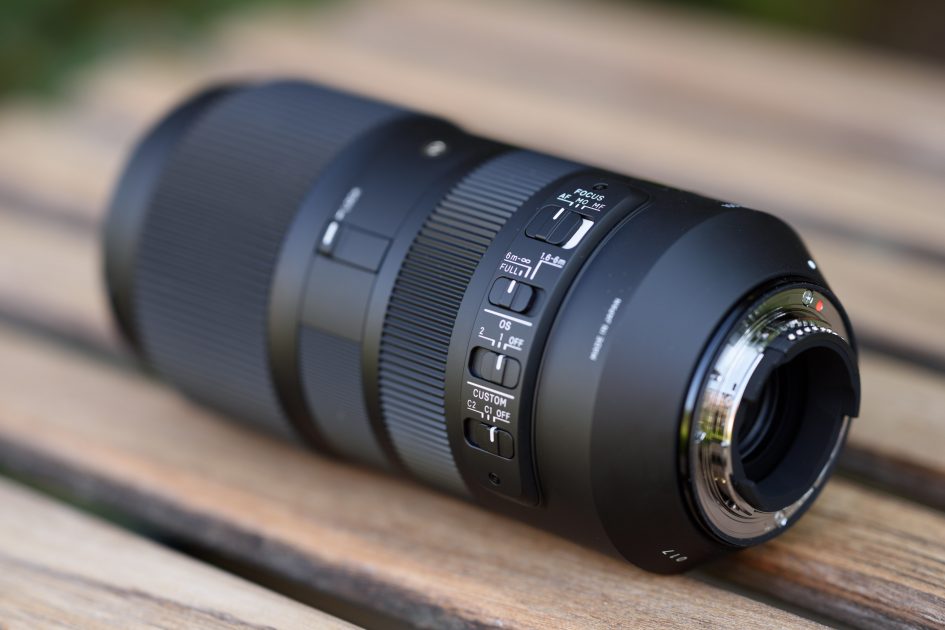
Auto focus: HSM (Hyper Sonic Motor), so it also works on camera bodies which don’t have an AF-drive built in like Nikon’s D3x00/5×00. Manual-focus in single-servo AF (AF-S) override is by simply turning the focus ring. Same with the Nikon and the Canon. If you want manual override in continuous-servo AF (AF-C) you need to switch focus mode to MO. The new Sigma allows you to alter focus fine-tuning at 4 distances and 4 focal lengths with the USB-dock. Plus it has a limiter switch with three positions: full / 6m – infinity / 1.6 – 6m which is also configurable with the USB-dock. [+]
Covers full frame/FX or smaller = very good. Same with the competition. [+]
Price: around 900 EUR (incl. 19% VAT) / 800 USD. That’s pretty cheap in comparison: The Nikon goes for 2400 EUR and the Canon is around 2000 EUR. [++]
Comes without lens pouch or strap. The lens hood is included, reversible for transport, and the lens-caps are standard. When using the camera’s onboard flash the lens hood does not cast a shadow at the bottom of the image. [0]
The lens has no tripod collar, and there is no way to attach one. That means you have to dangle the full weight of the lens from the camera body when you use a tripod. [-]
Distance information is relayed to the camera, so the camera and flashes can do all the advanced exposure-related stuff with this lens. Same for the competition. [+]
Aperture ring: no, same as with the competition. The aperture is actuated electromagnetically in the Nikon-version too which makes it the equivalent of a modern E-type Nikon lens and puts away with the mechanical coupling that Nikon uses on all older lenses. [0]
Sealing: yes, a rubber grommet at the lens-mount but no further special weather-sealing. The Nikon has an additional seal at the front between the lens-cap and the lens. The Canon is also weather-proofed. [+]
The score in the “features-department” is 1[-]/5[0]/10[+]. The major issue is the missing tripod collar, the major benefits are the low weight, its relatively small size and the low price.
Two long telephoto lenses
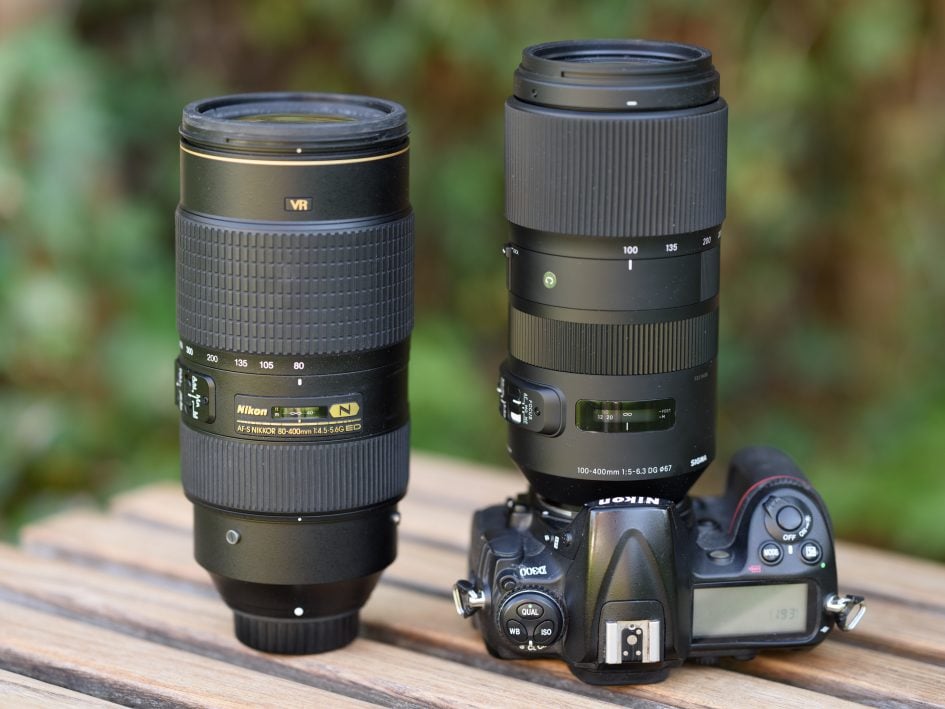
Above left: Nikon 80-400mm f4.5-5.6G VR, above right: Sigma 100-400mm f5-6.3 OS
Alternatives:
- Canon users can get the EF 100-400mm f4.5-5.6 L IS II USM from 2014. It’s one third of a stop brighter than the new Sigma but also 400g heavier and costs around 2000 EUR. Tests indicate very good optical performance.
- Nikon has the AF-S 80-400mm f4.5-5.6G ED VR from 2013. It costs around 2400 EUR and its optical performance earned it a Highly Recommended. See my Nikon 80-400mm f4.5-5.6G VR review.
- Sony offers the brand new FE 100-400mm f4.5-5.6 GM OSS from 2017 for E-Mount. It’s listed at 2900 EUR. At 94 x 205 mm and 1395 g it’s about the size and weight of the Nikon. The lens offers its own image stabilization so you need not rely on the built-in stabilization featured in some Sony bodies. It offers a focus hold button that can be reprogrammed for different tasks, its front-element is coated for easier cleaning, and the lens is thoroughly sealed against the elements. The lens also offers a unique mechanism whereby you can adapt the stiffness of the zoom ring to your liking.
- If you’re looking for an affordable (but physically larger) telephoto zoom you might also consider the stabilized 150-600mm f5-6.3 offerings from Sigma (contemporary version) or Tamron. They cost around 900 EUR (if you’re happy to use Tamron’s 1st generation lens, the G2 is at around 1400 EUR). The big benefit is the additional 200mm at the long end which give you 50% more reach/magnification. The disadvantages are their considerably greater size and weight (around 105 x 260 mm, 2kg) and that they start at 150mm focal length which might already be too long for your purposes. Otherwise the performance is very convincing and the 2nd generation Tamron earned a Recommended in my Tamron SP 150-600mm f5.0-6.3 VC G2 review.
Here is the angle of view that the new Sigma 100-400mm covers with its 4x zoom:

Above: Sigma 100-400mm f5-6.3 OS coverage on Nikon D810 (FF/FX) body at 100mm (left) and 400mm (right)
Compare this to the 5x coverage of the Nikon 80-400mm:

Above: Nikon 80-400mm f4.5-5.6G VR coverage on Nikon D810 (FF/FX) body at 80mm (left) and 400mm (right)
Focus and zoom
Focus accuracy and repeatability is critical to consistently produce sharp shots. Repeatability (the accuracy of focus on the same subject after repeated focus-acquisition) of this lens at standard settings and 400mm focal length is pretty good (measured 97.8% in Reikan FoCal) with 1 mild outliers over a series of 40 shots. And there is only a slight performance variation whether the lens focuses from infinity or from a closer distance. At 200mm focal length and standard settings the lens focuses without hunting in around 0.6 sec from infinity to 2m, which is fast. You can adapt focus speed via USB-dock to go a bit faster at 0.5 sec or a bit slower at 0.7 sec. The Nikon 80-400/4.5-5.6G VR needs 0.5 sec, has a repeatability of 98.6%, and had no outliers in 40 shots under the same test conditions.
The focus ring has no slack/play between its movement and the focus-action and a throw of 135 degrees. Its rubberized surface is 20mm wide. The zoom ring turns through 90 degrees and has a 45mm wide rubber surface. Both rings are of medium stiffness. They turn both in the same direction as Canon users are used to but this is the complete reverse of what Nikon does. But at least all three models have the zoom ring at the front and the focus ring closer to the camera.
When you attach the lens hood there is a nice groove to hold the lens and operate the zoom by pushing and pulling. This works pretty well but also means that the lens is prone to zoom-creep. So it’s good you can lock the zoom at 100 mm.
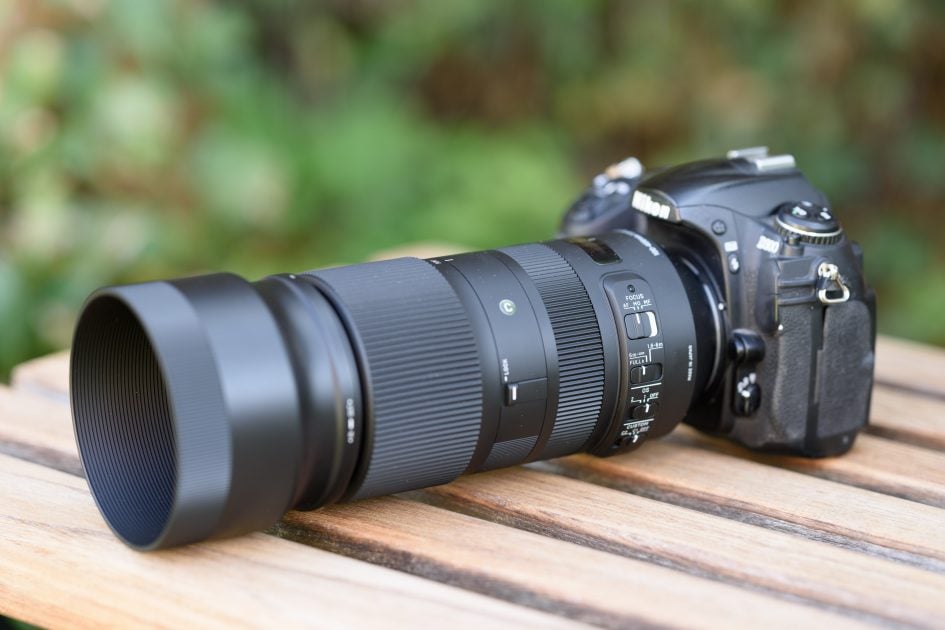
AF-operation is barely audible from the outside, and if you record video with the built-in microphone the AF-drive produces no clicks at the start or stop of focus-movements. But there seem to be two drive-modes during a contrast based focus operation: in slow mode noise is very low while in high-speed mode the camera records a noticeable hiss. The image stabilization is virtually silent both on the outside and when recording video.
As you pull focus, you’ll notice some focus breathing: the image becomes more magnified at closer focusing distances. When I adjusted the focus from infinity to 4 m on the Sigma, I measured a 4% increase in magnification at 400 mm focal length which is pretty low and probably does not disturb videographers. In comparison the Nikon 80-400/4.5-5.6G VR shrinks the image by 7%.
Image stabilization
To test the effectiveness of the image stabilization I did a series of 160 test-shots hand-held with the new Sigma at 400mm focal length. I tested with OS in mode 1 and shutter speeds were from 1/400 of a second down to 1/12 sec. Shots at 1/400 sec with OS=OFF are used as reference of how good my hand-holding was at the time of the test and Reikan FoCal did the chore of evaluating the sharpness of all shots. The results were a bit of a mix. Here’re the details: at 1/400 sec and 1/200 sec OS=On has a clear advantage over OS=Off. At 1/100 sec (2 stops) and 1/50 sec (3 stops) the results with OS=On were clearly worse than 1/400 sec with OS=Off – although still a bit better than 1/100 sec with OS=Off. At 1/25 sec and 1/12 sec the effect of image stabilization improved a bit with the chances to get a usable image is almost 1 out of 2 shots at 1/12 sec. This is a good news/bad news situation. The good news: at shutter speeds that are 4-5 stops below the normally advised speeds you can get quite astonishing results. This would support Sigma’s claim of an improved OS. The bad news: somewhere between 1/200 and 1/25 sec the success-rate of the OS is worse than at 1/25 or 1/12 sec. This might have to do with the mirror-/shutter-slap of the D810 which was used for this test aggrevated by the fact that the lens has less mass than most zooms reaching 400mm. After seeing these results I opted to shoot all my hand-held samples at speeds of at least 2/focal length i.e. 1/200 sec at 400mm. It is quite possible that other cameras or the addition of a battery-grip might reduce the problem. Still: better test your combination of camera and lens before you put too much faith in the image stabilization at medium shutter speeds.
The Sigma offers customization of their image stabilization: in addition to “normal” OS operation you can choose to put more weight on the stabilization of the viewfinder-image (and consequently shooting video) or to put more weight on stabilization of stills. I did all my OS tests in normal OS mode as there was no time to repeat this test for the other two settings. My impression of the normal OS mode was a relatively light viewfinder stabilization, indeed much less than I normally find with other stabilized lenses. I assume therefore that Sigma has opted to put more weight on stabilizing stills in the standard operation of their OS.
Next check out my quality results!
Check prices on the Sigma 100-400mm OS at Amazon, B&H, Adorama, or Wex. Alternatively get yourself a copy of my In Camera book or treat me to a coffee! Thanks!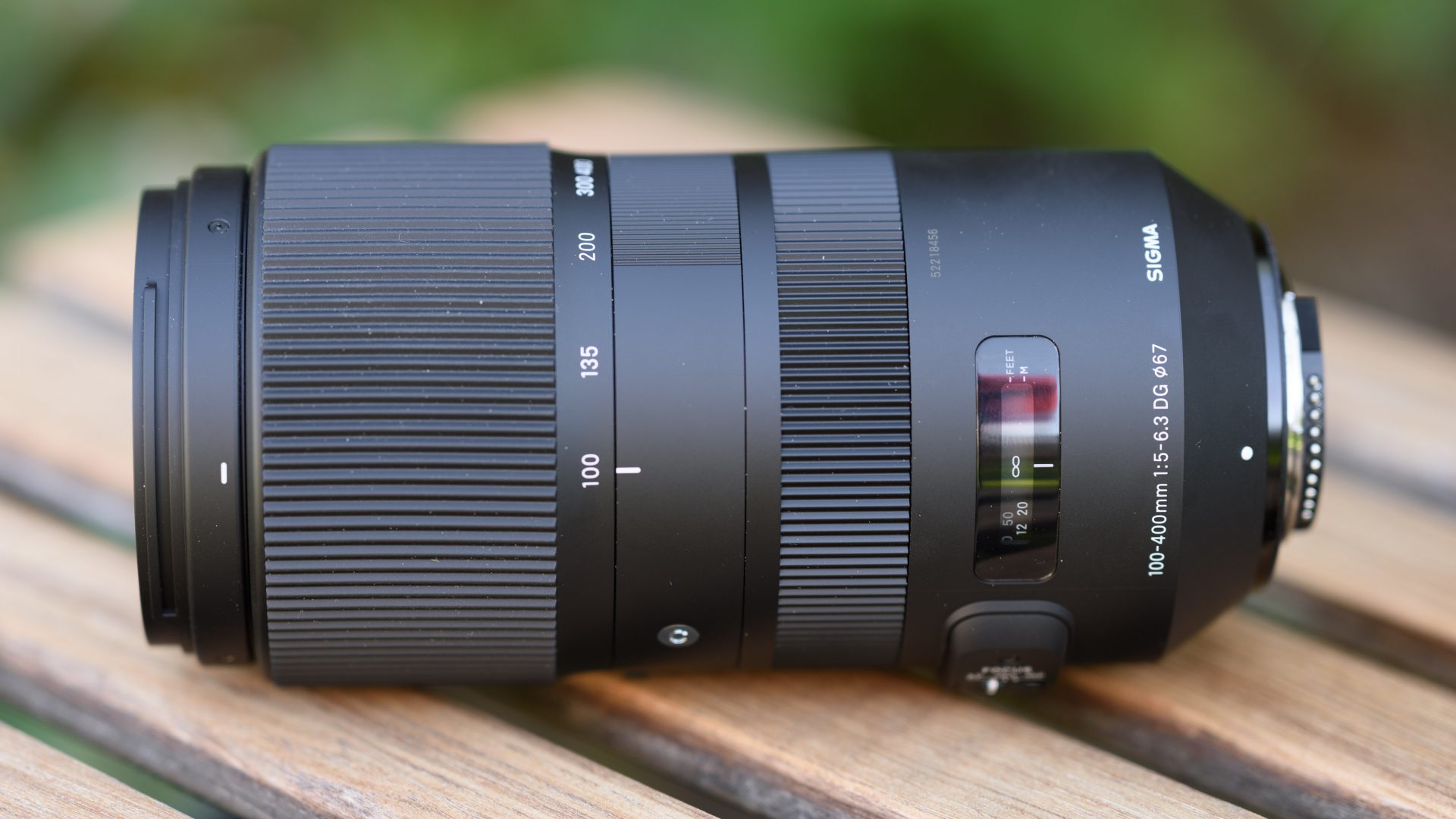
 If you like small and light, have a limited budget, and need the reach of a 400mm telephoto zoom, the new Sigma is your best choice: it is the cheapest, smallest and lightest modern zoom reaching 400mm plus it's sharp and has only minor color aberrations. Its biggest let-down is the missing tripod collar and most importantly the disappointing OS performance: it is not very effective around 1/100 sec and 1/50 sec which is a critical range of shutter speeds for such a lens. But all-in-all the Sigma 100-400/5-6.3 OS certainly earns a recommendation.
If you like small and light, have a limited budget, and need the reach of a 400mm telephoto zoom, the new Sigma is your best choice: it is the cheapest, smallest and lightest modern zoom reaching 400mm plus it's sharp and has only minor color aberrations. Its biggest let-down is the missing tripod collar and most importantly the disappointing OS performance: it is not very effective around 1/100 sec and 1/50 sec which is a critical range of shutter speeds for such a lens. But all-in-all the Sigma 100-400/5-6.3 OS certainly earns a recommendation.



